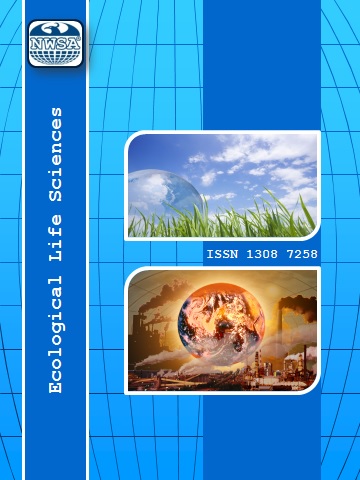References
[1] Ate??ahin, T., Aslan, E. ve Özmen, M.M., (2014). Elazy? ilindeki amatör balykçylaryn sosyo-demografik özellikleri üzerine bir ön ara?tyrma. Yunus Ara?tyrma Bülteni, 2014(1):4150. doi: 10.17693/yunusae.vi.235404.
[2] Ate??ahin, T. ve Cilbiz, M., (2023). Keban Baraj Gölü sportif olta balykçyly?y alabalyk turnuvasy de?erlendirmesi: av kompozisyonu ve verimi. Acta Aquatica Turcica, 19(3):257265. doi: 10.22392/actaquatr.1212438.
[3] Ate??ahin, T. ve Cilbiz, M., (2019). Amatör iç su balykçylarynyn sosyo-demografik özellikleri: Türkiye örne?i. Turkish Journal of Agriculture-Food Science and Technology, 7(1):134141. doi: 10.24925/turjaf.v7i1.134-141.2326.
[4] Ate??ahin, T. ve Cilbiz, M., (2018). Türkiye iç su amatör balykçyly?ynda amatör balykçy belgesi. Journal of Limnology and Freshwater Fisheries Research, 4(2):103111.
[5] doi: 10.17216/limnofish.374113.
[6] Cooke, S.J. and Cowx, I.G., (2006). Contrasting recreational and commercial fishing: Searching for common issues to promote unified conservation of fisheries resources and aquatic environments. Biological Conservation, 128(1):93108. doi: 10.1016/j.biocon.2005.09.019.
[7] Cooke, S.J., Suski, C.D. Arlinghaus, R., and Danylchuk, A.J., (2013). Voluntary institutions and behaviours as alternatives to formal regulations in recreational fisheries management. Fish and Fisheries, 14(4):439457. doi: 10.1111/j.1467-2979.2012.00477.x.
[8] Cooke, S.J., Lennox, R.J., Cantrell, B., and Danylchuk, A.J., (2020). Micro-Fishing as an Emerging Form of Recreational Angling: Research Gaps and Policy Considerations. Fisheries, 45(10):517521, doi: 10.1002/fsh.10487.
[9] Donaldson, L.A. and Cooke, S.J., (2016). The effectiveness of non-native fish eradication techniques in freshwater ecosystems: a systematic review protocol. Environmental Evidence, 5(1):12. doi: 10.1186/s13750-016-0063-x.
[10] Ate??ahin, T. ve Cilbiz, M., (2019). The effect of hook size, spinner colour and fishing season on catching efficiency in angling for rainbow trout, oncorhynchus mykiss (Walbaum, 1792). Pakistan Journal of Zoology, 51(5):19371942. doi: 10.17582/JOURNAL.PJZ/2019.51.5.1937.1942.
[11] Çapkyn, K. and Cilbiz, M., (2023). Investigating Relationships Between Catch Per Unit Effort (CPUE) and some angler characteristics in the Turkish Inland recreational fisheries: A Case Study from Uluabat Lake. Kahramanmara? Sütçü Ymam Üniversitesi Tarym ve Do?a Dergisi, 26(6):13871396. doi: 10.18016/ksutarimdoga.vi.1193781.
[12] Akku?, S. ve Bozao?lu, M., (2020). Van Gölü havzasyndaki amatör balykçyly?yn sosyo ekonomik analizi. Journal of Anatolian Environmental and Animal Sciences, 5(5):205211. https://doi.org/10.35229/jaes.688481.
[13] M. ve Karapiçak, A.M. ve Tez, S., (2015). Do?u Karadeniz Bölgesindeki amatör balykçyly?yn sosyo ekonomik analizi. Ordu Üniversitesi, 2015.
[14] Tunca, S., Aydin, M., Karapiçak, M., and Lindroos, M., (2018). Recreational fishing along the middle and eastern black sea Turkish coasts: Biological, social and economic aspects. Acta Adriatica, 59(2):191205. doi: 10.32582/aa.59.2.4.
[15] Ate??ahin, T., (2022). The effect of artificial lure type and environment conditions on the short-time post-release mortality of two recreational fished Luciobarbus species. Journal of Applied Ichthyology, 38(1):5362. doi: 10.1111/jai.14278.
[16] Zengin, M., (2014). An overview of the status of recreational fisheries in Turkey: Samples of Galata Bridge, the Dardanelles, and Lake Abant. Yunus Ara?tyrma Bülteni, 2:5165. doi: 10.17693/yunusae.v2013i21905.235423.
[17] Taylan, B., Say?y, H. ve Kutlu, B., (2018). Tunceli Ylindeki amatör olta balykçyly?ynyn genel durumu. Turkish Journal of Agriculture - Food Science and Technology, 6(10):14791484. doi: 10.24925/turjaf.v6i10.1479-1484.2099.
[18] Ate??ahin, T., (2019). Amatör olta balykçyly?ynda yasaklanan tyryvyry (para?üt) av aletinin sucul ve karasal canlylara vermi? oldu?u zararlar. Ecological Life Sciences, 14(3):4348. doi: 10.12739/NWSA.2019.14.3.5A0115.
[19] Rahel, F.J. and Olden, J.D., (2008). Assessing the effects of climate change on aquatic invasive species. Conservation Biology, 22(3):521533. doi: 10.1111/j.1523-1739.2008.00950.x.
[20] Jeanson, A.L., vd., (2021). A bright spot analysis of inland recreational fisheries in the face of climate change: learning about adaptation from small successes. Reviews in Fish Biology and Fisheries, 31(2):181200. doi: 10.1007/s11160-021-09638-y.
[21] Williams, J.E., Haak, A.L., Neville, H.M., and Colyer, W.T., (2009). Potential Consequences of Climate Change to Persistence of Cutthroat Trout Populations. North American Journal of Fisheries Management, 29(3):533544. doi: 10.1577/M08-072.1.
[22] Embke, H.S., vd., (2022). Global dataset of species-specific inland recreational fisheries harvest for consumption. Scientific Data, 9(1). doi: 10.1038/s41597-022-01604-y.
[23] Lynch, A.J., etl., (2016). The social, economic, and environmental importance of inland fish and fisheries. Environmental Reviews, 24(2):115121. doi: 10.1139/er-2015-0064.
[24] Cooke, S.J., Arlinghaus, R., Johnson, B.M., and Cowx, I.G., (2015). Recreational fisheries in inland waters. Freshwater Fisheries Ecology, 449465. doi: 10.1002/9781118394380.ch36.
[25] Sarkar, U.K. and Das, B.K., (2021). Research advances in climate and environmental change impacts on inland fisheries of India: status, vulnerability and mitigation strategies. Aquatic Ecosystem Health & Management, 24(3):717. doi: 10.14321/aehm.024.03.03.
[26] Yücel, ?. ve Yördem, A., (2021). Rekreasyon/Sportif Olta Balykçyly?y; Ankara Yli Örne?i. Turkish Journal of Agriculture - Food Science and Technology, 9(3):542548.
[27] doi: 10.24925/turjaf.v9i3.542-548.4013.
[28] Lynch, A.J., etl., (2024). Inland recreational fisheries contribute nutritional benefits and economic value but are vulnerable to climate change. Nature Food, 5(5):433443. doi: 10.1038/s43016-024-00961-8.
[29] Pentyliuk, N., Schmidt, B., Poesch, M.S., and Green, S.J., (2023). Recreational angler reporting as a tool for tracking the distribution of invasive Prussian carp (Carassius gibelio). Conservation Science and Practice, 5(1). doi: 10.1111/csp2.12850.
[30] Ficke, A.D., Myrick, C.A., and Hansen, L.J., (2007). Potential impacts of global climate change on freshwater fisheries. Reviews in Fish Biology and Fisheries, 17(4):581613. doi: 10.1007/s11160-007-9059-5.
 +90(535) 849 84 68
+90(535) 849 84 68 nwsa.akademi@hotmail.com
nwsa.akademi@hotmail.com Fırat Akademi Samsun-Türkiye
Fırat Akademi Samsun-Türkiye
